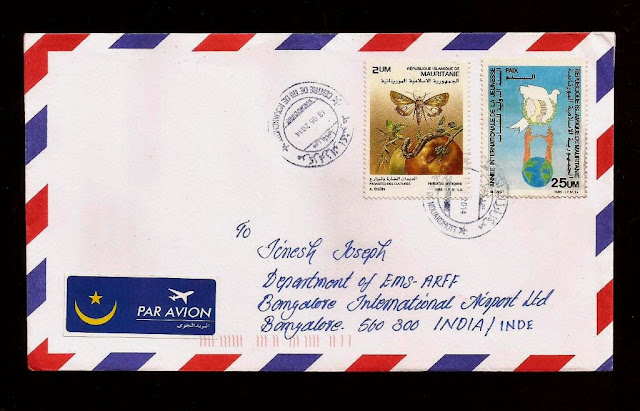Mauritania (Arabic: موريتانيا, French: Mauritanie; Berber: Agawej or Cengit: Pulaar: Moritani; Wolof: Gànnaar; Soninke: Murutaane), officially the Islamic
Republic of Mauritania (Arabic: الجمهورية الإسلامية الموريتانية), is a country in Northwest Africa. It is the eleventh largest sovereign state in Africa and is bordered by the Atlantic Ocean to the west, Western Sahara to the north and
northwest, Algeria to the northeast, Mali
to the east and southeast,
and Senegal to the southwest. The country derives its name from the ancient Berber kingdom of Mauretania, which existed from the 3rd century BCE into the
7th century CE in the far north of modern-day Morocco and Algeria. Approximately 90% of Mauritania's
land is within the Sahara; consequently, the population is concentrated in the
south, where precipitation is slightly higher. The capital and largest city is Nouakchott, located on the Atlantic coast, which is home to
around one-third of the country's 4.4 million people. The government was
overthrown on 6 August 2008, in a military coup d'état
led by General Mohamed Ould Abdel Aziz. On
16 April 2009, Aziz resigned from the military to run for president in the 19
July elections, which he won.
Arabic is the official and national
language of Mauritania. The local spoken variety, known as Hassaniya, contains many Berber words and significantly differs from the Modern Standard Arabic
that is used for official communication. Pulaar, Soninke and Wolof also serve as national languages. French is widely used in the media and among educated classes.
The local population is composed of three main ethnicities: Bidhan or white Moors, Haratin or black moors, and West Africans. 53% Bidhan, 30% Haratin, and 17% others. Local
statistics bureau estimations indicates that the Bidhan represent around 53% of
citizens. They speak Hassaniya Arabic and are
primarily of Arab-Berber origin. The Haratin constitute
roughly 34% of the population. They are descendants of former slaves and also speak Arabic. The remaining 13% of the
population largely consists of various ethnic groups of West African descent.
Among these are the Niger-Congo-speaking Halpulaar (Fulbe), Soninke, Bambara and Wolof.
Mauritania's first stamps
were issued in 1906. Before that, Mauritania used the stamps of Senegal. The
1906 stamps were the common design used in all the French West African
territories, featuring General Louis Faidherbe on the low values (1-10
centimes), oil palms on the middle values (20-75 centimes), and Dr. Noel Eugene
Ballay, a colonial administrator, on the high values (1-5 francs). The stamps
showed both the territory name and the collective designation "Afrique
Occidentale Francaise." Various territories were joined in 1895 by the
French colonial authorities in a federation known as French West Africa (AOF).
These territories included Mauritania, Senegal, French Sudan (now Mali),
French Guinea (now Guinea), Côte d'Ivoire, Niger, Upper Volta (now Burkina Faso) and Dahomey (now Benin). The French colonial territories
in the federation issued their own postage stamps until 1943. In many cases,
the stamps were inscribed with the name of the federation "Afrique
Occidentale Française" as well as the colony's own name. A long series of definitive stamps followed in
1913 in a common design showing a family crossing the desert, which was in use
for 25 years. A new issue in 1938 was used until individual issues for the West
African territories were discontinued in 1944. Thereafter, Mauritania used the
stamps of French West Africa until independence. The first stamps of
independent Mauritania were issued on January 20, 1960.
Since independence,
Mauritania has issued a moderate number of colorful stamps, usually in
denominations intended for normal postal purposes, not exploitation of
collectors. Topics range widely, from internationally renowned personages,
international organizations, wildlife and marine animals, sports, aviation,
etc. The French African CFA franc was in use until 1973, when a new currency,
the ouguiya (UM) was introduced at a rate of 1 UM = 5 fr. CFA, resulting in
stamp issues in the new currency. In
1943 and 1944, stamps of Senegal and Mauritania were overprinted with new values and valid throughout French West
Africa
The cover sent on July 13, 2014, and I received on August 20, 2014.


No comments:
Post a Comment
Note: only a member of this blog may post a comment.